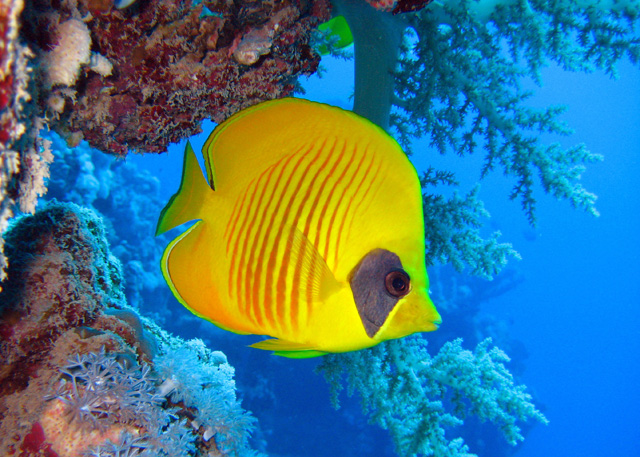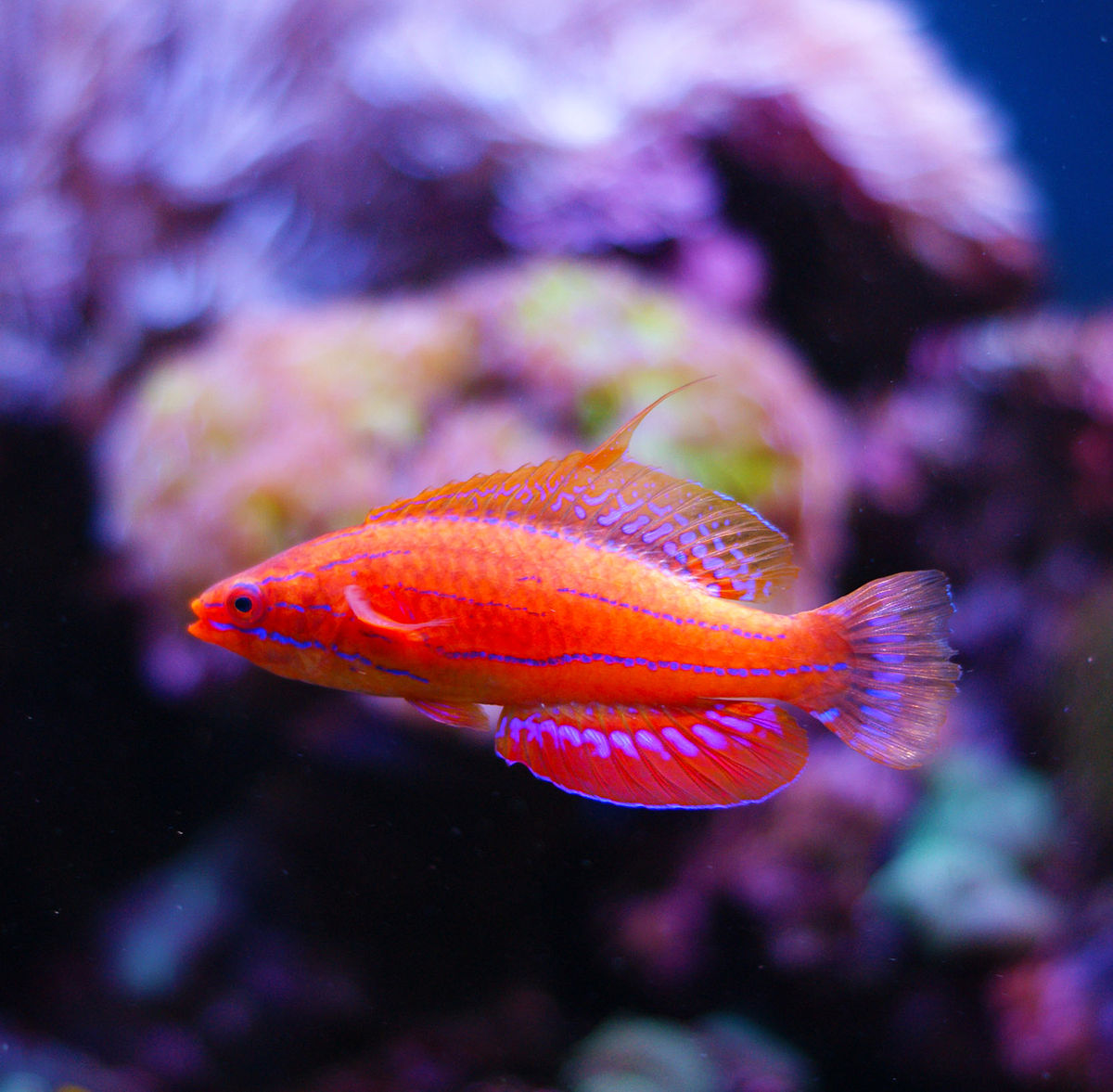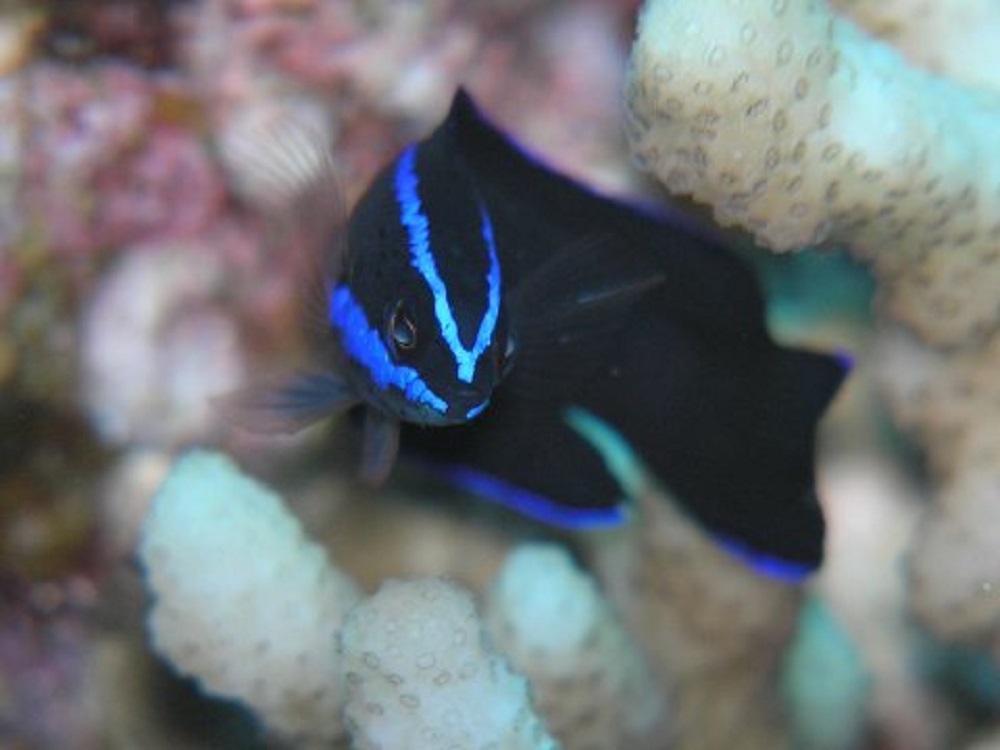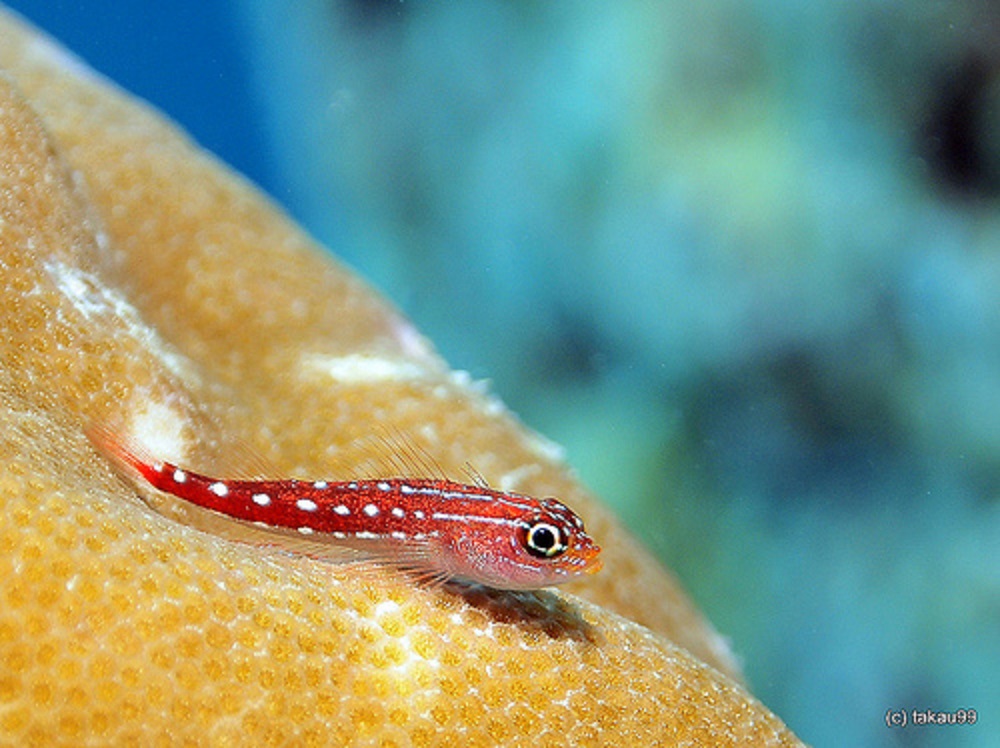To anyone standing on its shore, gazing unto its crystalline waters, Egypt’s Red Sea is beautifully serene. Its waters, although ceaselessly in motion, remain calm and peaceful season after season; underneath its surface, however, a different world exists, a world full of motion and life that dances all around.
Corals sway in perpetual currents (Read Part I: Coral Treasures), while schools of fish of every possible color crisscross around dotted reefs, nipping at their frilly flowers and swimming together in harmony. It is a vibrant oasis where a myriad of sea creatures live and thrive; from gardens of corals of more than two hundred different species, to sea turtles, spinner dolphins, dugongs, sharks and more than a thousand species of fish and a similar number of invertebrates, many of which not found anywhere else in the world.
Recognized as one of the Seven Wonders of the underwater world, the Red Sea’s colorful waters host an amazingly productive ecosystem that is considered one of the world’s most significant repositories of marine biodiversity and an ecological treasure. It is a magnet for divers and tourists from all over the globe who flock to it to experience its supreme snorkeling and diving locations famous for their high level of endemism and breathtaking beauty.
One of the renowned treasures of the Red Sea is the large number of endemic fish species living in its waters; some experts say as many as 20% of 1200 fish species living here are unique and do not exist anywhere else on Earth.
Thanks to its narrow, shallow mouth, the Red Sea is a partially isolated body of water of higher temperature and average salinity than the neighboring Indian Ocean. These localized conditions have triggered a unique evolutionary process that has led to such a high proportion of endemic species, the likes of:
- The Masked Butterflyfish, aka Chaetodon semilarvatus, is a photogenic, perfectly choreographed bright and yellow beauty often seen in pairs but also in schools. It is found in coral rich areas of lagoons and seaward reefs, feeding on coral polyps(1), tentacles of featherdusters(2) and Christmas-tree worms(3).

Source: Shutterstock
- Living up to its name, the Arabian Picasso Triggerfish, or Rhinecanthus assasi, resembles a picture of the famous painter. Known to be difficult to photograph, they quite often take off in exactly the wrong moment. They inhabit lagoons and seaward reefs from 1 m to 25 m depth, and are usually very territorial and wary, never straying far from shelter.
.jpg)
Source: Shutterstock
- Red Sea Flasher Wrasse, or Paracheilinus octotaenia, is a remarkably colored wrasse featuring different hues of yellow, orange and red. The distinguishing feature of this fish is the striking blue lines that run horizontally along the length of the fish. The color of the female is subdued when compared to the “flashy” brilliance of the male, which displays its brilliantly colored fins when courting in an attempt to persuade its mate.

Credits: By Gdiggers - Own work, CC BY-SA 3.0, https://commons.wikimedia.org/w/index.php?curid=25121932
- The Red Sea Anemonefish, or Amphiprion bicinctus, is a clownfish of the family Pomacentridae. Known for being monogamous, living in pairs, they inhabit host anemones and have a fascinating symbiotic relationship with them, using the stinging tentacles of the anemone for protection. The fish in turn also protect the anemone by attacking any threats, small or large. Bearing a resemblance to the famous “Nemo”, this Red Sea version is a different species.
.jpg)
Source: Shutterstock
- ِAmber black with bright blue blazes above and below its eyes, Springeri Dottyback, aka Pseudochromis springeri, is an unusually beautiful and interesting to observe species. Although shy, it is surprisingly fast; usually found weaving between the branches of stony corals, feeding on planktons and scavenging for tiny shrimps.

- Despite the misleading name, the Spanish Triplefin is only to be found in the Red Sea. With a maximum size of 2.5 cm and rusty-brown markings, it is quite difficult to spot, but is usually found at Ras Mohammed National Park.

Glossary
- Coral Polyp is the individual multicellular organism that forms corals.
- Featherduster worms: Sabellidae are sedentary marine tube worms where the head is mostly concealed by feathery branchiate. They build tubes out of parchment, sand, and bits of shell.
- Christmas tree worms: Spirobranchus giganteus are small, tube-building marine worms. The worms’ most distinct features are two "crowns" shaped like Christmas-trees used as specialized mouth appendages.
References
http://www.hepca.com
http://www.biomapegypt.org
http://www.redsea-divingsafari.org
http://www.about.com
http://redseasharks.org
This article was first published in print in the PSC Newslertter, Summer 2012 issue.
Cover Image: Life Below the Red Sea, Egypt. Credit: thundafunda/Flicker